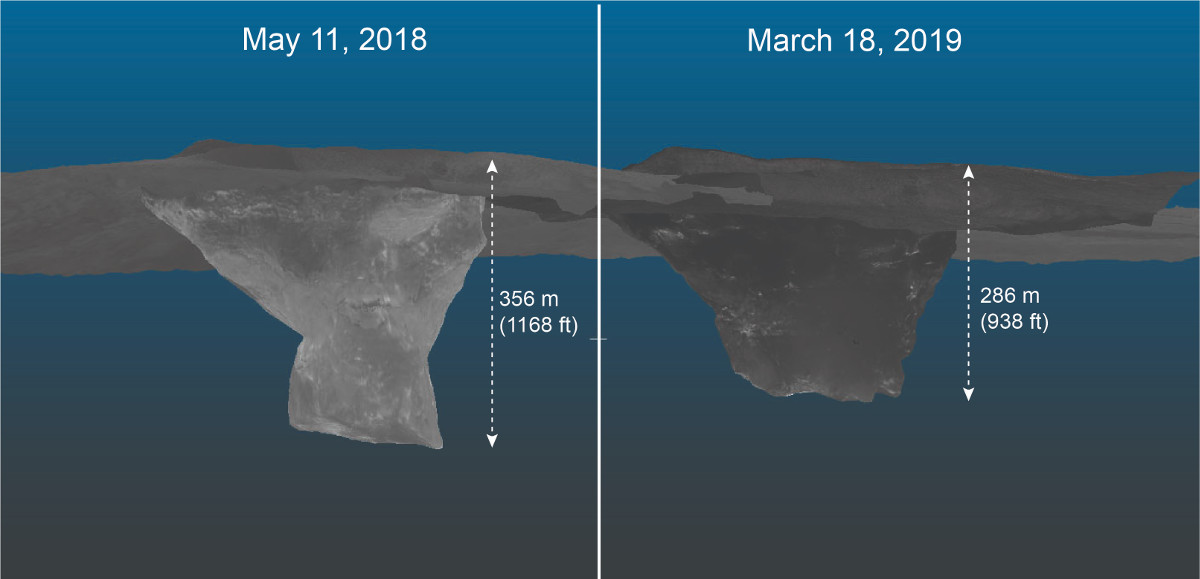
Comparative images courtesy USGS Hawaiian Volcano Observatory.
(BIVN) – No major changes were observed at Pu‘u ‘Ō‘ō during a recent helicopter overflight by the USGS Hawaiian Volcano Observatory. However, the empty crater on Kīlauea Volcano is slowly being altered by small rockfalls within it.
The USGS posted some video from the overflight to its website this week.
Magma drained from beneath Puʻu ‘Ō‘ō on April 30, 2018. A few days later lava erupted on the lower East Rift Zone. After the magma drained, the crater was roughly 1,168 feet deep, scientists say.
Collapses on the crater walls have since filled the deepest part with rockfall debris. Today, the deepest portion of the crater is 938 feet.
A 3D model of the Pu‘u ‘Ō‘ō crater was constructed from thermal images taken during the recent overflight. White areas show warm spots in the crater, scientists explain.
The shape of the crater continues to change through occasional small collapses within it. In its weekly update, USGS HVO wrote:
A GPS station on the north flank of Puʻu ʻŌʻō has been showing steady slumping of the craters edge. This motion is not directly related to magmatic activity, but is interpreted to be sliding of the unstable edge of Puʻu ʻŌʻō cone. Small collapses at Puʻu ʻŌʻō have occurred since the eruption due to instability.

by Big Island Video News8:56 am
on at
STORY SUMMARY
HAWAIʻI VOLCANOES NATIONAL PARK - A recent helicopter overflight allowed the USGS Hawaiian Volcano Observatory to construct a new, 3D thermal model.